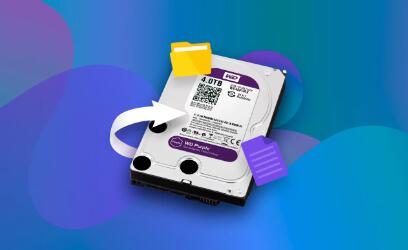In the world of data management, Western Digital (WD) stands out as a leader in storage solutions. However, data loss can still occur, making recovery software essential.
Chapter 1: Understanding Data Loss
Data loss can happen due to various reasons, including accidental deletion, hardware failure, and software corruption. Understanding these causes is crucial for effective recovery.
Accidental Deletion: Users may unintentionally delete important files. Recovery software can restore these files if they haven’t been overwritten.
Hardware Failure: Hard drives, including WD drives, can fail due to mechanical issues. Data recovery software might help if the drive is still operational.

Software Corruption: Files can become corrupted due to malware or improper shutdowns, necessitating recovery efforts.
Chapter 2: Overview of Western Digital Data Recovery Software
Western Digital offers a range of data recovery tools tailored for its hardware. The primary software includes:
WD Drive Utilities: This tool helps manage WD drives, including formatting and diagnostics. It provides essential features but isn’t specifically a recovery tool.
WD SmartWare: While primarily backup software, it offers file recovery capabilities if the backup is available.
Third-Party Software: Several third-party solutions are compatible with WD drives, enhancing recovery options.
Chapter 3: Features of WD Data Recovery Software
When evaluating WD data recovery software, consider these key features:
User-Friendly Interface: Ease of use is critical, especially for non-technical users. The software should offer a straightforward recovery process.
File Type Support: Ensure the software can recover various file types, including documents, photos, and videos.
Deep Scan Capability: A deep scan feature can search for lost files beyond simple deletions, improving recovery chances.
Preview Functionality: Users should be able to preview recoverable files before initiating recovery.
Compatibility: Ensure the software is compatible with your specific WD drive model and operating system.
Chapter 4: How to Use WD Data Recovery Software
Follow these steps to maximize recovery efforts:
Download and Install: Obtain the software from the official WD site or a trusted source. Follow the installation instructions carefully.
Connect Your Drive: Ensure your WD drive is connected to your computer. If it’s a failing drive, use a USB adapter for better access.
Launch the Software: Open the recovery software and select your WD drive from the list.
Select Scan Type: Choose between a quick scan and deep scan, depending on your needs. A deep scan will take longer but is more thorough.
Preview and Recover: After the scan, preview the files. Select the desired files and choose the recovery location.
Save Recovered Files: Ensure you save recovered files to a different drive to avoid overwriting any remaining data.
Chapter 5: Best Practices for Data Recovery
To optimize your data recovery efforts, keep these best practices in mind:
Stop Using the Drive: Immediately cease any usage of the drive to prevent data overwriting.
Regular Backups: Regularly back up important files using WD’s backup solutions or cloud services.
Update Software: Ensure your recovery software is updated to access the latest features and improvements.
Use Reliable Power Sources: Power interruptions during recovery can lead to further data loss. Use an uninterrupted power supply (UPS) if necessary.
Chapter 6: Comparison with Other Recovery Software
Panda Assistant is an innovative data recovery software designed to help users effortlessly recover lost or deleted files from various storage devices, including external hard drives, SD cards, and USB drives. With a focus on user experience, Panda Assistant features an intuitive interface that makes it accessible for both novice and experienced users alike.
Equipped with advanced scanning algorithms, Panda Assistant excels in recovering a wide range of file types, such as documents, photos, videos, and audio files. Its deep scan functionality allows it to locate files that may have been partially overwritten, significantly increasing the chances of successful recovery. Additionally, the software offers a preview feature, enabling users to view recoverable files before proceeding with the recovery process.
Chapter 7: Troubleshooting Common Issues
Even with effective software, users may encounter problems. Here are common issues and their solutions:
Drive Not Recognized: Check connections, ensure the drive is powered, and test on another computer.
Software Crashes: Ensure you have the latest version of the software and sufficient system resources.
Incomplete Recovery: If some files are missing, try running a deep scan or using a different recovery tool.
Chapter 8: Future of Data Recovery
As technology evolves, so does data recovery. Future trends may include:
AI Integration: Artificial intelligence can enhance recovery algorithms, improving success rates and efficiency.
Cloud Recovery Solutions: Increasing reliance on cloud storage necessitates new recovery methods tailored for online data.
Improved User Interfaces: Future software will likely focus on intuitive design to make recovery accessible to everyone.
About us and this blog
Panda Assistant is built on the latest data recovery algorithms, ensuring that no file is too damaged, too lost, or too corrupted to be recovered.
Request a free quote
We believe that data recovery shouldn’t be a daunting task. That’s why we’ve designed Panda Assistant to be as easy to use as it is powerful. With a few clicks, you can initiate a scan, preview recoverable files, and restore your data all within a matter of minutes.

 Try lt Free
Try lt Free Recovery success rate of up to
Recovery success rate of up to









